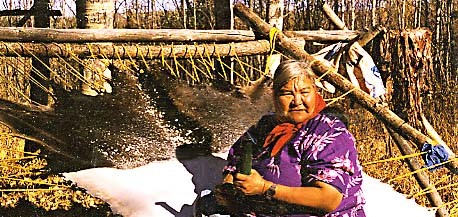Our name for Petersen’s Crossing is Alááʔ S̱atǫ, which means “Boat Sitting There.” Alááʔ S̱atǫ is a major point in DRFN’s trail system because the stepped terraces provide a natural place to cross the Beatton River. Today, the road follows our historical trail, and the members and the general public can drive across the bridge at Alááʔ S̱atǫ on their way to Doig River, Peejay or Milligan Creek.
Alááʔ S̱atǫ came to be known as Petersen’s Crossing when Mr. Ernie Petersen established a store there in the 1930’s. Mr. Petersen’s store was strategically located across the river from where DRFN members traditionally camped, so he could easily purchase furs from DRFN members.
Petersen’s Crossing is an important place in the history of the Fort St. John Beaver Band as it is where many members were relocated for several years after being displaced from the Montney reserve after World War II. DRFN did not have a formal reserve until the 1950’s, almost a decade after being displaced from Montney.

Petersen’s Crossing Day School
The Department of Indian Affairs and their Indian Agent, Galibois, set up a day school at Petersen’s Crossing. DRFN families were forced to send their children to the day school or they would be sent to residential schools. These orders were enforced by the Catholic Church and the RCMP. To keep their children at home, many families built log cabins and settled at Alááʔ S̱atǫ for the winter months. DRFN members who experienced trauma as a result of the day school are part of the class action suits for the Indian Day Schools and the 60’s Scoop.

When our reserve at IR #206, Hanás̱ Saahgéʔ (Doig River) was established in 1952, many people moved to Doig, but a handful of people, including many members of the Askoty, Makadahay, Oker and Pouce Coupe families, continued to live at Alááʔ S̱atǫ.
The late Annie Oker and Emma Pouce Coupe – former residents from Peterson’s Crossing.
Our Dreamer Oker had a camp and later a cabin, at Alááʔ S̱atǫ. Oker passed away in 1951, but “Oker Flats,” the area around his camp where members gathered for our Dreamers’ Dances, is named in memory of him. Oker died there and his grave is still located in our cemetery at Alááʔ S̱atǫ.
Billy Attachie remembers the death of Oker and his life at Alááʔ S̱atǫ. He also recalls other Dreamers such as Charlie Yahey and Gaayęą who came to visit Oker at Alááʔ S̱atǫ to share songs, stories and dance with our people there.
Learn more about this special place including the stories and songs associated with it by visiting our Dane Wajich educational website here.


